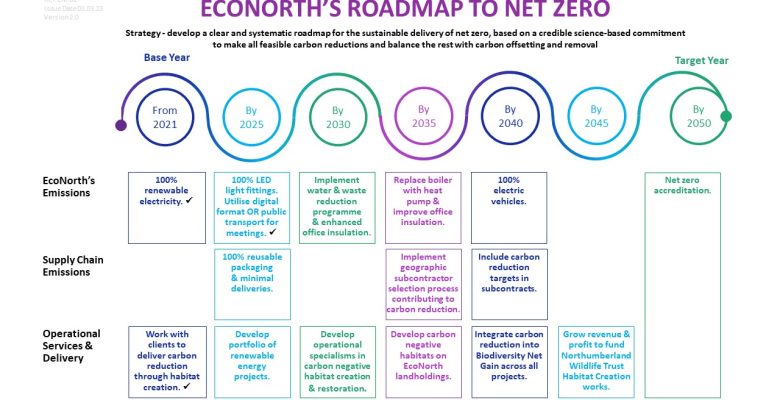EcoNorth currently has in place a ‘Roadmap to Net Zero’ carbon reduction strategy which aims to see the company achieving a net zero accreditation by 2050. Our roadmap includes various milestones, some of which have already been achieved. In 2021, we moved to a green electricity supply and now all electricity used in our head office is supplied by renewables. Additionally, we have recently moved to 100% LED light fittings in our head office.
As part of our roadmap and in order to ascertain the company’s historical and current carbon footprint, baseline emissions were calculated for two years, being 1 April 2019 to 31 March 2020 and 1 April 2020 to 31 March 2021. These calculations were completed in accordance with Greenhouse Gas Reporting 2019 conversion factors published by the UK Government Department for Business Energy and Industrial Strategy. Quantifying our carbon footprint puts the company in a position to demonstrate our sustainability and environmental responsibility.
Following our initial baseline assessments, we recently appointed a Carbon Reduction Consultant to examine and verify our current carbon emissions for the year 1 April 2021 to 31 March 2022. This work has now been completed in accordance with International Standard BS EN ISO 14064-1 and the GHG protocol. As a result, we have identified that our current emissions can be reduced by c50% through the implementation of reduction strategies which focus on the emission sources of significant contributors to our overall carbon footprint.
In addition to the potential reduction strategies that have been identified, our work as ecological consultants also allows us to contribute to carbon reduction through habitat creation and restoration, thus offsetting our own carbon footprint. Over the past two years, the company has been heavily involved in various habitat creation projects, including pond creation within Northumberland with over 30 new habitats created, which are carbon negative.

